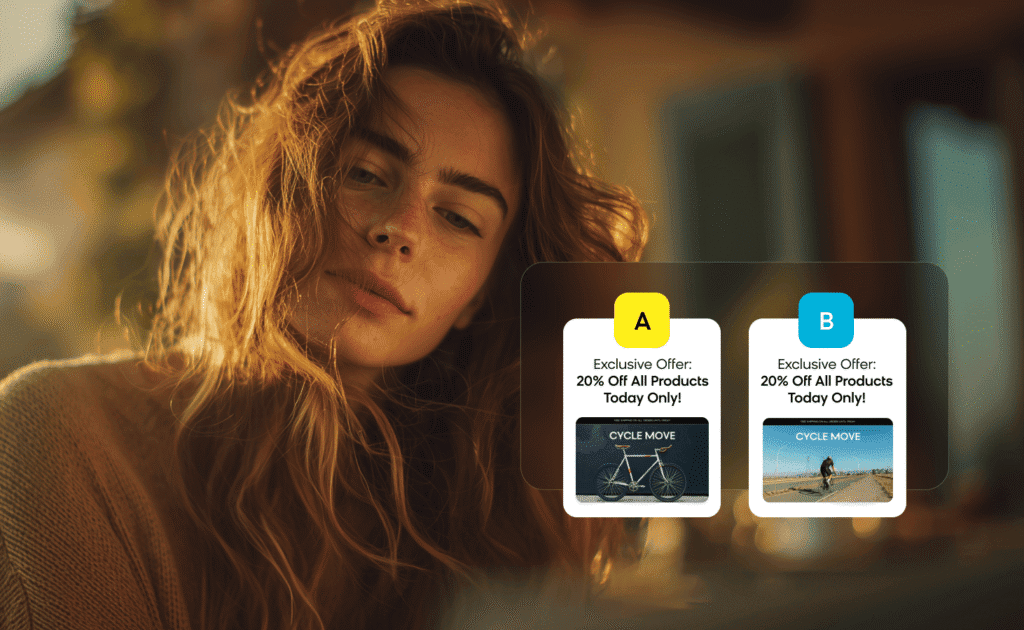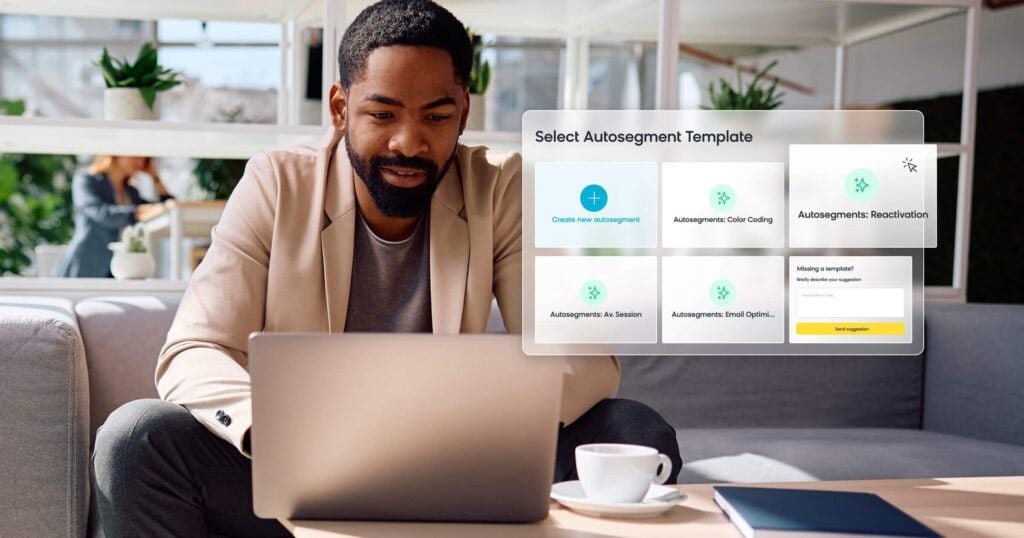The retail landscape has transformed dramatically over the past decade. The rise of online shopping, accelerated by the pandemic’s impact on traditional retail, has completely rewritten the rules of customer engagement.
Today’s consumers expect personalized experiences that are timely and seamless across every channel. While retailers recognize this shift, many still operate with outdated CRM systems that can’t handle the pace, complexity, or expectations of modern commerce.
This shift is precisely what our latest webinar, developed in partnership with WeDoCRM, addresses head-on. We’ve reimagined what retail CRM should look like in 2025 and beyond, exploring how forward-thinking retailers can break down data silos, accelerate real-time insights, and unlock significant revenue through intelligent personalization.
See how leading retailers are breaking free from legacy systems and driving measurable growth. Short on time? Get the key insights in our whitepaper.
Why Legacy CRM Systems Are Failing Retailers
Despite having access to countless platform options — CRMs, ESPs, CDPs, and CMSs — retailers haven’t seen this technology translate into better customer experiences or higher marketing ROI. Instead, they consistently face the same pain points that prevent growth.
Data Silos Kill Customer Experience
Customer data remains trapped in isolated systems, making it nearly impossible to activate real-time insights or create a unified customer view. Marketing teams manually reconcile data across incompatible platforms, creating blind spots that prevent understanding customer lifetime value.
Speed Gaps Create Revenue Loss
Marketing teams wait days or weeks for the data and insights they need. By the time they act, opportunities vanish. Modern shoppers expect brands to respond to their behavior instantly, but legacy systems create dangerous delays between customer intent and retailer response.
“Personalization” That Feels Generic
Without real-time capabilities, brands default to static campaigns that miss engagement opportunities and erode trust. True personalization requires understanding not just who customers are, but which products will resonate with them right now.

Expensive, Underutilized Tools
Retailers pay premium prices for complex tools they barely use. The average marketing team juggles 10-15 different technologies daily, creating inefficiency and fragmented customer experiences.
These issues compound into one major problem: missed opportunities to engage customers, drive conversions, and build lifetime value. Each disconnected interaction represents potential revenue walking away.
From Legacy CRM to Real-Time Customer Intelligence
The gap between customer expectations and retailer capabilities continues to widen. Modern shoppers demand experiences that recognize their preferences, anticipate their needs, and engage them meaningfully across every touchpoint. Yesterday’s CRM solutions simply can’t deliver this reality.
Strategic Investment Over Bloated Budgets
Retailers face a critical choice: continue investing in expensive, monolithic systems with diminishing returns, or pivot to agile, cost-effective solutions that actually work.
The math is compelling. Instead of maintaining separate systems for email, content, customer data, and product information, forward-thinking retailers are discovering that unified platforms deliver everything more efficiently while reducing total cost of ownership by up to 40%.
Consider Nordic retailer Proffsmagasinet, which consolidated multiple point solutions into an integrated platform. Rather than managing disparate strategies, the brand created connected omnichannel campaigns, resulting in 33% fewer emails sent while achieving 2x higher conversion rates.
Meeting Customer Expectations at Speed
Adapting quickly to changing customer behaviors is no longer optional. Legacy platforms require months of development for minor changes, creating dangerous gaps between customer expectations and retailer delivery.
Modern commerce platforms prioritize agility by enabling retailers to respond to market shifts in days rather than months, test personalization strategies without IT dependencies, and scale seamlessly during peak seasons without performance issues.

Empowering Teams With Usable Technology
Complex legacy systems create adoption barriers that leave powerful technology sitting underutilized. Today’s platforms need intuitive interfaces that teams actually embrace. With user-friendly design and AI-powered features, marketers can create sophisticated, personalized journeys without coding or technical dependencies.
This democratization of technology means faster campaigns, more testing, and better results across the board.
Essential Strategies To Maximize CRM Value in 2025
Success in modern retail requires a strategic approach that goes beyond traditional CRM thinking. Here are five practical strategies retailers can implement to unlock engagement, revenue, and retention:
1. Unify Customer and Product Data in Real Time
True personalization starts with complete, accurate customer views matched to current product data. Without this foundation, every “personalized” message risks being outdated or irrelevant.
Integrate your CRM, ESP, CDP, and product catalog into one real-time system. This enables you to deliver messaging that reflects what customers want and what you can sell, instantly.
2. Transform Email With Unified Intelligence
Email continues to drive exceptional ROI for retailers, but crowded inboxes demand intelligence beyond basic personalization. Modern email platforms instantly connect customer and product data, transforming ordinary campaigns into revenue engines.
The best platforms merge two traditionally siloed data streams: customer behavior and product intelligence. This creates personalization that transcends basic segmentation. By connecting real-time customer behavior with deep product data, retailers can show the right product to the right customer at exactly the right time.
3. Embrace AI and Automated Journeys
Basic automation (e.g., abandoned cart emails, post-purchase sequences) is table stakes. Leading brands now use AI and machine learning to predict intent, suggest next-best actions, and dynamically adjust content based on real-time behaviors.
This leads to smarter marketing that adapts to each customer automatically, creating more relevant experiences while reducing manual effort.
4. Expand Beyond Email With Omnichannel Strategies
Email matters, but it’s not enough. Modern CRM requires consistent, personalized messaging across web, SMS, push, in-app, search, and conversational channels like chat.
This includes intelligent product discovery with AI-powered search that understands intent, as well as conversational shopping through natural language interactions that understand customer needs and guide them to the right products.
5. Optimize for Lifetime Value, Not Just Conversion
One-time purchases won’t sustain growth in today’s competitive landscape. Focus on building long-term value by using RFM (Recency, Frequency, Monetary) and CLV modeling to segment customers by potential, not just past behavior.
Prioritize high-value customers and tailor communications to maximize retention, repeat purchases, and loyalty. Simultaneously, prioritize stack simplicity by eliminating redundant functionality and choosing scalable technology that gives marketing teams speed, control, and room to grow.
The Path Forward: Building CRM for the Modern Retail Era
CRM has evolved from a back-office tool to a real-time engine of customer experience and ROI. It’s no longer about managing contacts or scheduled newsletters — it’s about activating live data, anticipating needs, and delivering value at every moment.
To compete effectively in 2025, retailers must fundamentally rethink how CRM fits their strategy. This means breaking down data silos to unify customer and product intelligence, acting in real time rather than on yesterday’s data, and scaling personalization across every relevant channel while focusing on lifetime value instead of just conversions.
By unifying customer and product data, embracing AI-powered personalization, and delivering consistent experiences across channels, you transform CRM from a basic system into a powerful engine for growth, loyalty, and competitive advantage.
The time to act is now. Retailers who delay modernizing their customer relationships risk falling behind those already creating the seamless, personalized experiences today’s consumers demand. Read our whitepaper and share it with your colleagues to start the discussion now.













